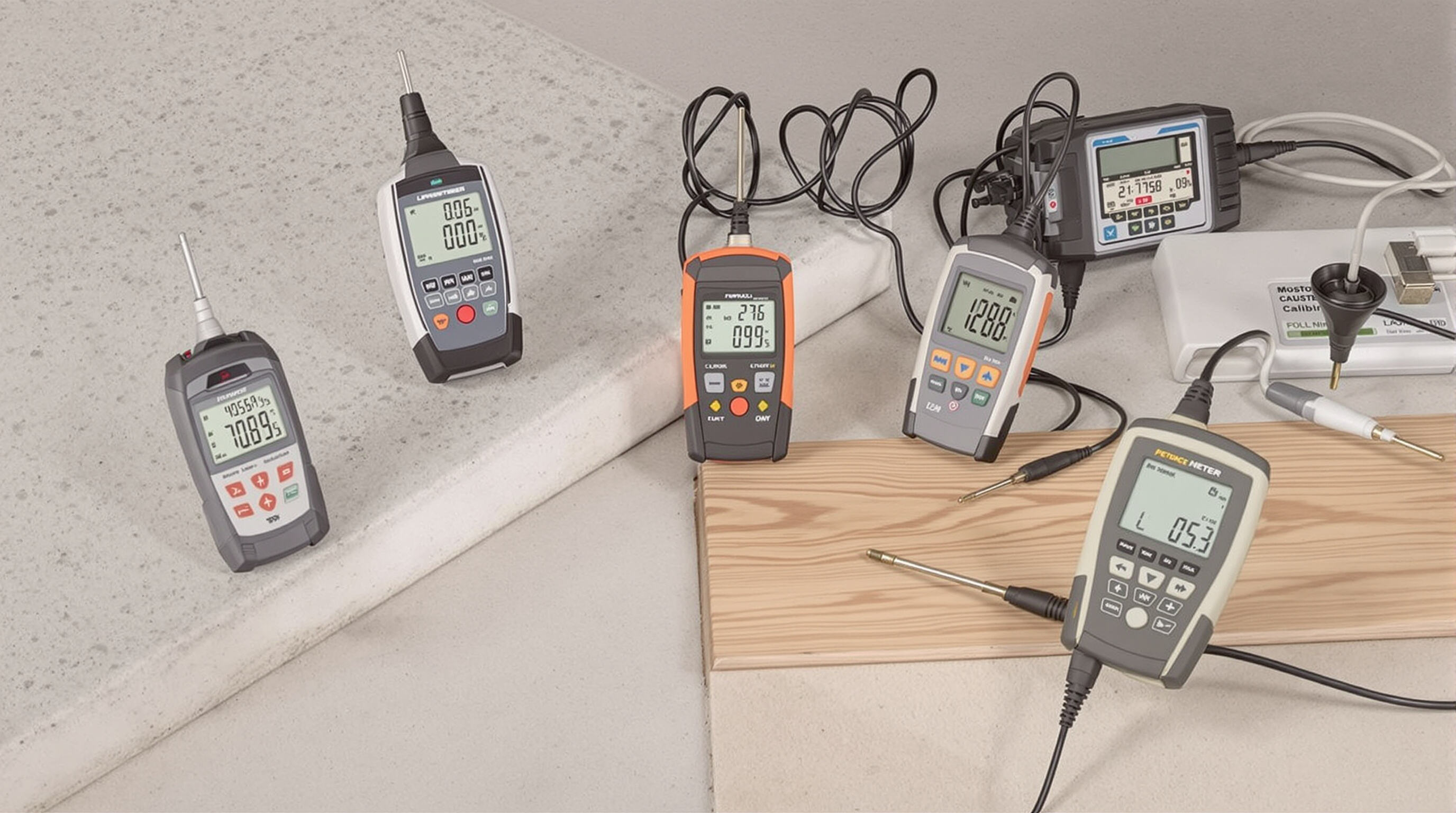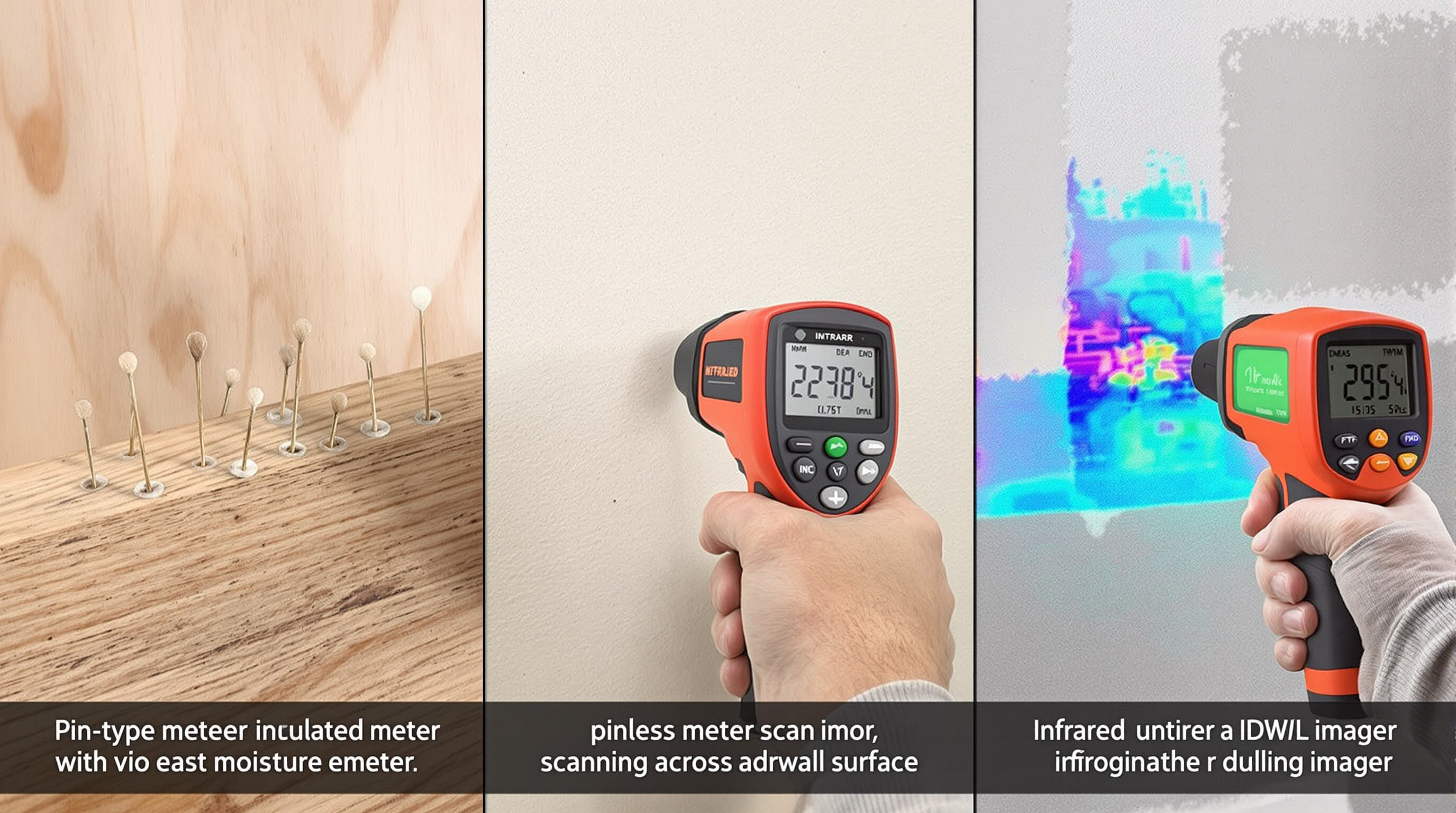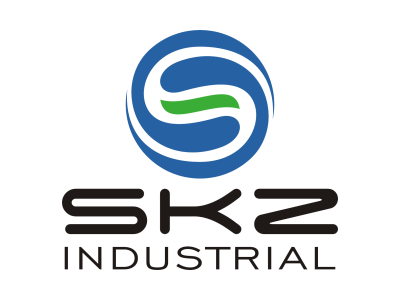Understanding Industry-Specific Moisture Meters Measurement Needs
The critical role of accurate moisture measurement in construction, agriculture, and woodworking
Getting moisture levels right matters a lot when it comes to stopping buildings from rotting, crops from going bad, and factory goods from turning out flawed. For building projects, if wood frames have more than about 12% moisture inside them, they're basically asking for trouble down the road. Farmers know that even small changes in grain moisture above 1.5% can spell disaster for whole seasons worth of work. Craftsmen working with wood need pretty accurate tools, around plus or minus 0.3%, just to keep their creations from twisting and warping after completion. Builders also grab thermal cameras these days to spot damp spots hiding behind walls where no one can see them. Some recent studies from 2024 show that nearly four out of five problems with materials related to moisture actually come from people not measuring properly in the first place.
Why generic moisture meters fall short across different industrial environments
Standard pin type meters just aren't cut out for working with layered stuff like concrete or those delicate fabrics where we need to test without causing damage. When it comes down to real industrial work, these generic tools fall short. What industries really need are specialized options instead. Think insulated probes that can get accurate readings at different depths in roofing materials, or maybe radio frequency sensors when dealing with things like soil samples or stored grains. According to research published last year on material compatibility issues, regular store bought equipment tends to give results that are around 20 percent off track when measuring moisture content in materials that naturally absorb water compared to properly calibrated industrial instruments. Makes sense why so many professionals stick with their dedicated gear despite the extra cost.
Unique moisture challenges in construction, restoration, textiles, and grain storage
Keeping drywall moisture under 5% is really important for restoration pros if they want to stop mold from growing. Textile mills have their own challenges too, needing to keep humidity levels right around 45 to 55% RH so fibers don't break down over time. When it comes to storing grain, even a tiny bit extra moisture makes a big difference. Just 2% over the safe limit can lead to fungus problems in as little as three days, which explains why most facilities install automatic monitoring these days. Construction crews generally go for quick surface checks with those pinless meters since they don't damage walls, but farmers working with crops need something different altogether. They rely on those deep core soil probes to get accurate readings underground, helping them figure out exactly when and how much water plants actually need.
Key Features to Maximize Accuracy and Usability in Moisture Meters

Accuracy, calibration, and response time for reliable industrial readings
Industrial environments require moisture meters with ±0.1% measurement consistency, maintained through regular calibration against NIST-traceable standards. Devices with sub-second response times support real-time quality control in fast-paced production. Without auto-calibration, field data shows error rates increase by 7%, undermining reliability in critical assessments.
Measurement range and material compatibility across diverse applications
Effective meters accommodate wide moisture ranges—from porous concrete (0.1%–30% MC) to dense hardwoods (6%–40% WC). Multi-mode sensors adjust automatically for substrate density, temperature, and salt content, improving accuracy. Agricultural and textile sectors report 90% higher reliability when using meters with customizable material profiles instead of one-size-fits-all models.
Durability, portability, and performance in harsh field conditions
When working with moisture meters in grain silos where temperatures can drop below freezing or reach up around 50 degrees Celsius, plus those damp construction sites that hit nearly 98% relative humidity, we need equipment built tough enough to handle it all. That means looking for devices with solid IP67 protection ratings and MIL-STD shock specs so they survive what gets thrown their way. Most modern units come with ergonomic designs featuring belt clips which makes them easier to manage when someone needs to check readings while standing on scaffolding or ladders. Some field research indicates that probes with vibration damping technology actually stay calibrated about three quarters longer than regular ones in these rough environments. Makes sense really since constant jostling would naturally throw off measurements over time.
Data logging, Bluetooth connectivity, and digital reporting for compliance
Models with 10,000-point data logging eliminate manual recording errors during audits. Cloud-synced, timestamped, and geo-tagged reports streamline compliance with ASTM F2170 and ISO 24443 standards. Quality managers using Bluetooth-enabled devices report 65% faster documentation, improving traceability and accountability in regulated environments.
Pin, Pinless, and Infrared Moisture Meter Technologies Compared

Pin-Type Meters: Depth-Specific Readings With Insulated Pins
Pin type meters work by sending electrical signals through penetrating electrodes to get accurate readings of moisture content at different depths in materials. They're particularly useful when checking wood frames or looking at how wet subfloors might be since what's happening inside the material really counts. With good calibration, most models can hit around plus or minus 1 percent accuracy on wood moisture equivalent measurements. Flooring professionals rely heavily on these tools during installations while water damage specialists find them indispensable after floods or leaks. The precision matters because even small differences in moisture levels can lead to big problems down the road with warping or mold growth.
Pinless Meters: Non-Destructive Scanning for Large Surface Areas
Pinless meters work by sending out electromagnetic waves that can penetrate surfaces up to about three quarters of an inch deep, all without causing any damage. These devices are great when checking things like drywall conditions, hardwood floor moisture levels, or even stockpiles of wood materials. Some research from last year showed pretty impressive results too. The study looked at furniture makers who started using these meters regularly and saw a drop in wasted materials around 34 percent because they could spot hidden moisture areas before making cuts. That said, it's worth noting that pinless meters give us comparative information instead of specific percentage numbers. For really important assessments where precision matters most, many experts still suggest double checking with traditional pin type meters just to be safe.
Infrared Meters: Surface Moisture Detection and Thermal Imaging Capabilities
Infrared or IR meters basically work by picking up changes in surface temperatures that happen when things cool down through evaporation. This lets them create maps showing where moisture is hanging around on surfaces like walls, rooftops, or even fabric materials. Combine these tools with thermal imaging cameras and suddenly HVAC techs can find those sneaky hidden water leaks behind walls. Building inspectors also get better at spotting spots where condensation might form inside insulation layers. But there's a catch worth mentioning here. If the surrounding air temperature jumps around too much, say more than 5 degrees Fahrenheit per hour, then the readings start getting messed up. That means relying solely on IR meters without considering environmental factors just isn't reliable enough for most real world situations.
Comparing Pin vs. Pinless vs. Infrared: Best Use Cases by Industry
| Technology | Strengths | Limitations | Top Applications |
|---|---|---|---|
| Pin-Type | Depth-specific accuracy, material-specific calibration | Surface damage, slower scanning | Woodworking, flood restoration |
| Pinless | Fast non-destructive scans, large-area mapping | Limited depth, material-specific settings | Flooring inspections, lumber yards |
| Infrared | Instant surface mapping, thermal anomaly detection | No subsurface data, ambient heat interference | Roofing surveys, manufacturing QA |
Data from material compatibility studies show 78% of industrial users combine two technologies—most commonly pin and IR—for comprehensive diagnostics in building assessments.
Top Moisture Meter Applications Across Industrial Sectors
Preventing mold and structural damage in building and restoration projects
Water meters are pretty handy for spotting those sneaky water problems hiding inside walls, floors, maybe even foundation cracks before mold starts growing everywhere. When restoration folks come in, they scan around without tearing things apart to find where dampness is lurking behind drywall or underneath floorboards, which helps keep the air inside buildings healthy. The thing is, catching these issues early can actually cut down on repair bills by something like 60 percent versus waiting until there's visible damage. And while fixing up after water damage, keeping humidity levels in check throughout the whole process makes all the difference for getting results that last years instead of months.
Ensuring wood quality and finish consistency in woodworking
Most woodworkers aim for around 6 to 12 percent moisture content prior to milling their stock, which helps avoid problems like warping, checking, or those pesky glue joint failures that nobody wants. For checking the moisture level inside kiln dried lumber stacks, many turn to digital pin meters that actually measure what's happening at the core. Pinless versions are great too when looking at finished work since they won't leave any marks on the surface. Keeping moisture levels consistent throughout the process makes all the difference in maintaining stable dimensions during joinery work. And let's face it, nobody appreciates furniture that looks good but falls apart after a few months because of moisture issues. Proper moisture management isn't just about preventing defects either it really does boost the overall quality and longevity of woodworking projects, which means happier customers and better business outcomes in the long run.
Optimizing harvest and storage with soil and grain moisture analysis in agriculture
Farmers are turning to soil moisture meters these days because they really help with irrigation planning. These devices measure water levels right where the roots grow, which cuts down on plant stress during dry spells and saves precious resources. The Food and Agriculture Organization reported that farms now deal with droughts about 30 percent more often than before, so this technology comes at a good time. Once crops are harvested, grain probes take over monitoring conditions inside storage silos. Farmers generally aim for around 12 to 15 percent moisture content in stored grains. Using both these tools together helps keep crop quality high while preventing losses all along the way from field to market.
Moisture control in paper manufacturing and building material production
Most paper mills keep their product at around 4 to 6 percent moisture content. This helps avoid those dreaded web breaks when running presses at top speed and makes sure the ink absorbs evenly across the sheet. When we look at building materials, things get just as critical. Inline moisture sensors are constantly watching over concrete as it cures and checking drywall for proper consistency. A mere 2% too much moisture in these applications means the whole batch gets tossed out. Getting this right cuts down on wasted material throughout the year by about 18%, which matters a lot for manufacturers trying to hit those industry standards for quality control.
Leading Moisture Meter Brands and Models for Industrial Use
ProScan: High-efficiency, non-invasive scanning for large-scale operations
ProScan leverages electromagnetic wave technology for rapid, non-destructive moisture mapping across large surfaces like concrete slabs and warehouse floors. It delivers ±1% accuracy in just 0.3 seconds, making it a top choice for construction firms managing stadium builds or agricultural operations monitoring grain storage.
TotalCheck 3-in-1: Versatile pin, pinless, and humidity measurement
This hybrid device integrates insulated pin probes for subsurface wood analysis, pinless scanning for gypsum, and ambient humidity sensing. Field tests show 98% correlation with ASTM oven-dry reference methods, making it a trusted tool for restoration crews handling diverse materials including drywall, hardwood, and insulation.
Protimeter lineup: Surveymaster, AQUANT, Mini, and MMS3 compared
| Model | Key Strength | Ideal Use Case |
|---|---|---|
| Surveymaster | Dual-depth pinless scanning | Roofing inspections |
| AQUANT | Salt contamination detection | Post-flood restoration |
| Mini | Pocket-sized affordability | HVAC technicians |
| MMS3 | 6-material preset profiles | Industrial wood processing |
Choosing trusted brands with strong support and long-term reliability
A 2025 industrial survey found that 78% of facility managers favor manufacturers offering five-year warranties and same-day technical support. Top brands provide ISO-certified recalibration and cloud-based dashboards, reducing equipment downtime by 43% in continuous operations such as paper mills. These features enhance operational continuity and long-term measurement confidence.
Frequently Asked Questions
What industries commonly use moisture meters?
Moisture meters are widely used in construction, agriculture, restoration, woodworking, textiles, and grain storage sectors.
Why are pin-type meters preferred in woodworking?
Pin-type meters offer depth-specific accuracy, making them ideal for checking moisture levels in wood materials, essential for consistent finishing and avoiding structural issues like warping.
What is the advantage of using infrared meters?
Infrared meters detect surface moisture and thermal anomalies, useful for mapping moisture presence in roofing surveys and manufacturing quality assessments.
How important is calibration in using moisture meters?
Calibration ensures moisture meters maintain accuracy and reliability. Without regular calibration, error rates increase, compromising critical assessments.
What should one consider when choosing moisture meter brands?
Consider brands offering extended warranties, reliable technical support, ISO-certified recalibration, and digital dashboard integration for stronger long-term reliability.
Table of Contents
- Understanding Industry-Specific Moisture Meters Measurement Needs
- Key Features to Maximize Accuracy and Usability in Moisture Meters
- Pin, Pinless, and Infrared Moisture Meter Technologies Compared
- Top Moisture Meter Applications Across Industrial Sectors
- Leading Moisture Meter Brands and Models for Industrial Use
- Frequently Asked Questions

